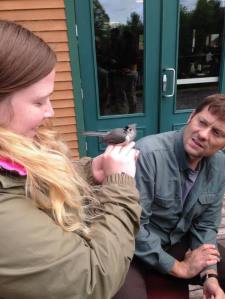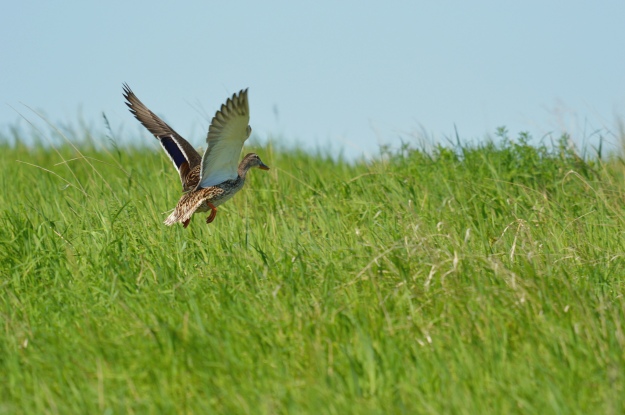Have you ever been outside and had a flash of color fly by? Do you find yourself intrigued to discover what kind of bird you caught a glimpse of? You are not alone in this curiosity, as tens of millions of Americans enjoy bird watching as a favorite pastime.
Chances are, you’ve seen a neotropical migratory bird species, like a Bicknell’s Thrush or Scarlet Tanager, who call multiple countries “home” depending its life cycle stage. Neotropical bird species are unique in that they breed in Canada and the United States during the summer and spend winters in Mexico, Central America and South America, making it critical to conserve habitat across many countries to ensure the longevity of these birds. Despite their incomparable beauty and invaluable ecological functions, populations of many migratory bird species with “dual citizenship” are in decline due to habitat loss and degradation.

Scarlet Tanagers are found in North, Central, and South America. Photo by Les Brooks.
The Neotropical Migratory Bird Conservation Act (NMBCA) is a federal grant program designed to benefit Americans through helping sustain their continued enjoyment of birds while stimulating economic growth in the birdwatching industry, and through ensuring habitat for migratory birds that help maintain our environmental health. In this year alone, over $3.8 million in grants from NMBCA will support 31 collaborative conservation projects throughout 19 countries including Canada, the United States, Mexico, and other countries in Central and South America.
NMBCA is unique in that it fosters collaborations between partners across many countries and habitats to conserve migratory bird habitat, engages local communities in bird habitat protection, strengthens international relations, and raises awareness of the importance of bird conservation. Migratory bird conservation does not have borders – without collective conservation effort and collaboration across countries, successful conservation of migratory birds is not possible, since these birds are “dual citizens” that call multiple countries home.

Birding at Gachette Reservoir in the Dominican Republic, supported by the NMBCA. Photo by USFWS Headquarters.
“For a lot of our migratory birds that spend a good time of their annual life cycle outside of the U.S., working with partners in other countries is really critical for maintaining stable populations for those species, and protecting habitat on both ends of their migratory routes,” says Randy Dettmers, a landbird biologist for U.S. Fish & Wildlife Service Division of Migratory Birds. “The NMBCA is one of few government sponsored funding mechanisms to help promote international and full life cycle conservation actions. It is really critical for a lot of our migratory species to link conservation efforts between breeding, migrating, and wintering areas.”

A Bicknell’s Thrush. Photo by Jeff Nadler.
A particular focus of the NMBCA is protecting habitat for various life stages of the Bicknell’s Thrush, a migratory bird species of highest conservation concern in the U.S.. The majority of the breeding population for Bicknell’s Thrush is in the northeast states, with wintering habitat in the Dominican Republic. “We recognize that loss of wintering habitat in the Dominican Republic is a major threat to Bicknell’s Thrush,” says Randy Dettmers. Randy, along with other members of the USFWS, had the opportunity to go to the Dominican Republic and meet with the Ministry of the Environment and other NGO conservation groups that are interested in protecting habitats for wildlife in general. “We had a great opportunity to see first hand the issues they are dealing with, and discuss ways to collaborate and share information. We shared what strategies worked well in management areas, and worked on developing better strategic management plans for remaining habitat for Bicknell’s Thrush.”
So why get involved in migratory bird conservation? The 386 neotropical migratory bird species, including songbirds, shorebirds, and birds of prey, provide essential ecological functions including pollinating and dispersing seeds of plants that create habitat for other wildlife, keeping insect and rodent populations in balance, and providing early warnings of environmental contamination. Secondary contributions include generating billions of dollars in economic growth through the purchases of binoculars, bird seed, and travel expenses.
Click here for more information on ways you can invest in conservation.
Learn more about bird watching or click here for more information on NMBCA.
Follow our page more great conservation stories from Hispanic Access Foundation interns!














